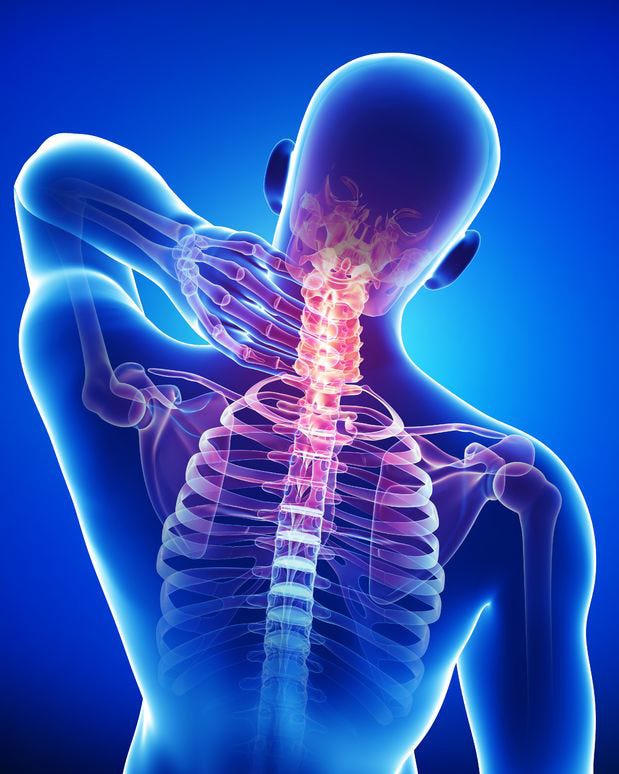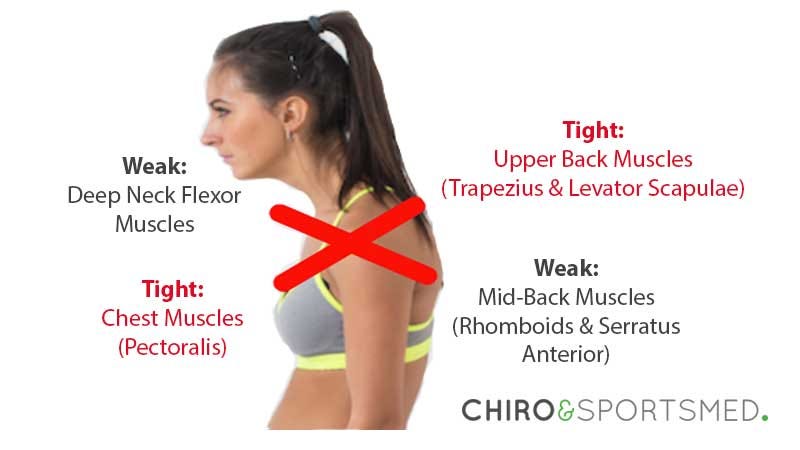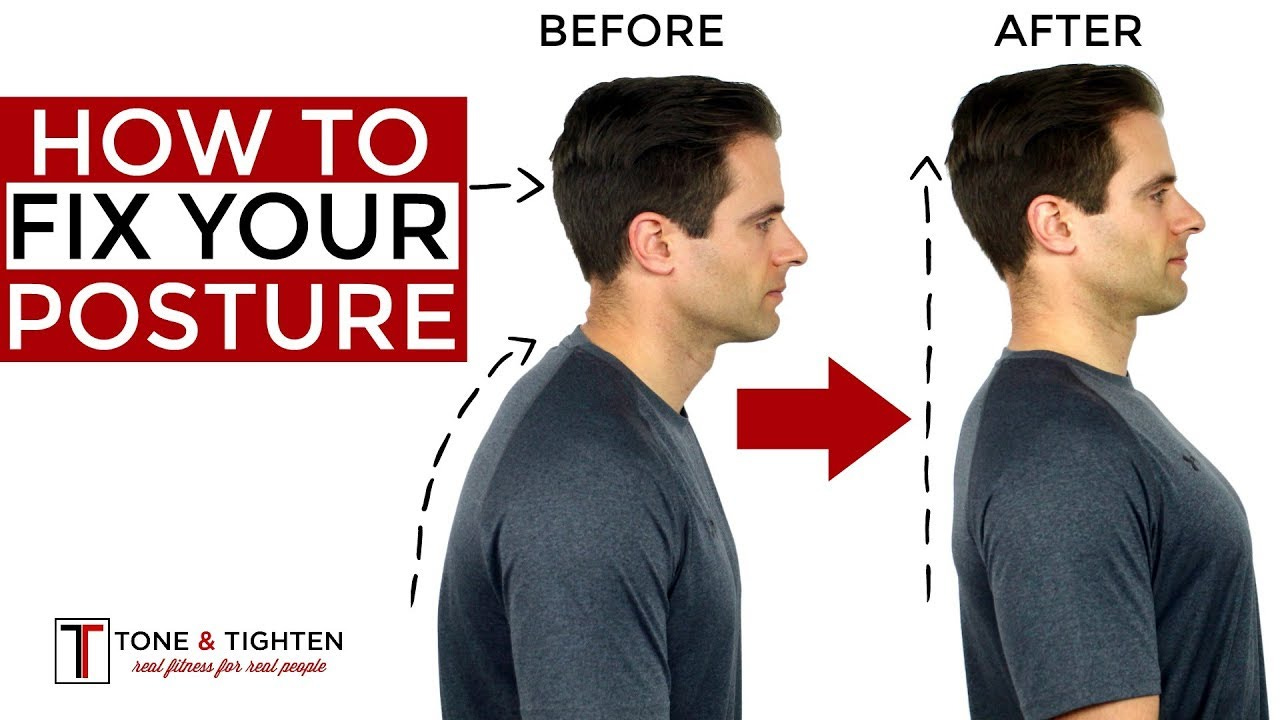
Neck pain is a prevalent musculoskeletal complaint, reaching as many as 30%-50% of the adult population (Cagnie, Struyf, Cools, Castelein, Danneels, & O’Leary, 2014). Additionally, 50%-85% of those who do experience neck pain continue to report discomfort following 1-5 years after the onset (Leaver, Maher, McAuley, Jull, Latimer, & Refshauge, 2013). Thus, understanding the nature and causes of neck pain is paramount; knowing the etiology allows for the development of interventions to mitigate cervical discomfort. As a means of appreciating the etiology of neck pain, the following will explore cervical discomfort through the chronic musculoskeletal pain cycle (CMPC) paradigm (Page, Lardner, & Frank, 2010).

Pain can cause muscle imbalances, and muscle imbalances can cause pain. Also evident are the strong associations between pain and movement dysfunction (Page et al., 2010). Additionally, pain and movement dysfunction are involved in a predictable cycle, with other events that perpetuates the aforementioned conditions. As mentioned in the introduction, Page et al. (2010) noted that the cycle is known as the CMPC, and its constituents include:
(1) Muscle imbalance
(2) Impaired movement patterns/postural changes
(3) Faulty motor programs
(4) Altered joint forces/altered proprioception
(5) Joint degeneration/postural changes
(6) Pain and inflammation
Janda observed three major types of postures: lower crossed syndrome (LCS), upper crossed syndrome (UCS), and layer syndrome (LS) (Page et al., 2010). Of particular interest is UCS; within this posture exists elements, which have the potential to cause neck dysfunction, and pain. UCS can be characterized by muscle imbalances; the lower/middle traps are inhibited as well as the deep cervical flexors, while the upper trapezius, levator scapula, and pectoralis minor are facilitated (Page et al., 2010). Thus crossed patterns, between the anterior and posterior sides of the body, of inhibited and facilitated muscles exist.

If neck pain follows CMPC, muscle imbalances from UCS lead to postural changes. Page et al. (2010) described that weak and tight muscles lead to a kyphotic thoracic spine, protracted and anteriorly tilted shoulders, followed by a forward neck posture. Poor posture leads to impaired motion; over time, the neck “learns” how to operate within the confines of cervical extension, deepening its patterns until impaired motions become a new and permanent program within the motor cortex (Page et al., 2010).
Newly acquired, yet aberrant, motor patterns place the cervical vertebrae of the neck in unusual, and biomechanically disadvantageous, positions. Misaligned cervical joints negatively affect sensory uptake (i.e., proprioception) as they inhibit processing of stimuli of the mechanoreceptors (Page et al., 2010). Lack of pertinent sensory information from the peripheral nervous system (PNS) and central nervous system (CNS) limits the efferent (motor output) response, thereby limiting postural stability of the neck (Page et al., 2010).
Altered movements continue to force joints out of neutral positions, placing unusual and atypical loading along segments of the cervical spine. Common regions of vertebral degeneration and joint dysfunction include the atlanto-occipital joint, C4-C5 segment, and cervicothoracic joint (Page et al., 2010). Ultimately, such joint degeneration can lead to further movement dysfunction, and pain.
In conclusion, movement impairments and pain share a distinct and intimate relationship to one another. Pain can induce muscle imbalances, and muscle imbalances can generate pain. Despite the underlying nature of pain and movement dysfunction, however, breaking the cycle of CMPC is of the utmost importance, if we wish to liberate individuals from both.
References
Cagnie, B., Struyf, F., Cools, A., Castelein, B., Danneels, L., & O’Leary, S. (2014). The relevance of scapular dysfunction in neck pain: A brief commentary. Journal of Orthopaedic & Sports Physical Therapy, 44(6), 435-439.
Leaver, A.M., Maher, C.G., McAuley, J.M., Jull, G., Latimer, J., & Refshauge, K.M. (2013). People seeking treatment for a new episode of neck pain typically have rapid improvements in symptoms: An observational study. Journal of Physiotherapy, 59(1), 31-37.
Page, P., Lardner, R., & Frank, C. (2010). Assessment and treatment of muscle imbalances: The Janda approach. Champaign, IL: Human Kinetics.
-Michael McIsaac
